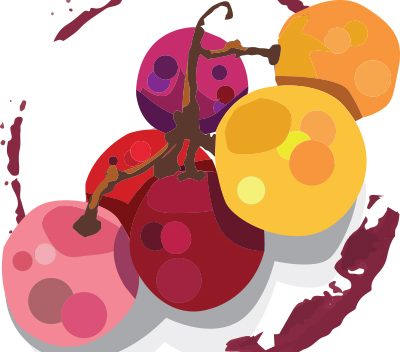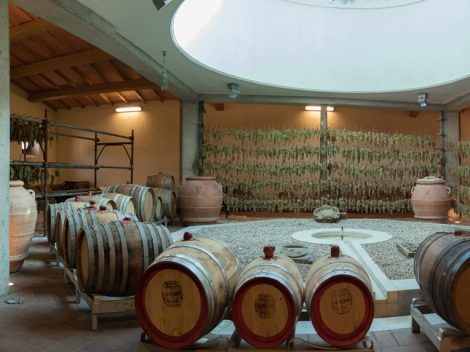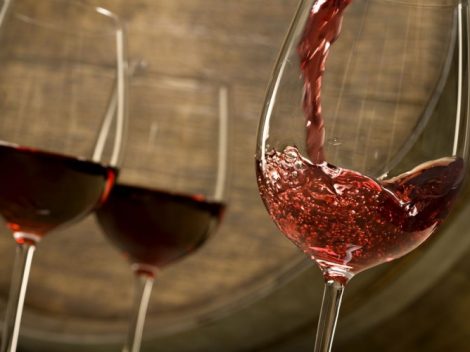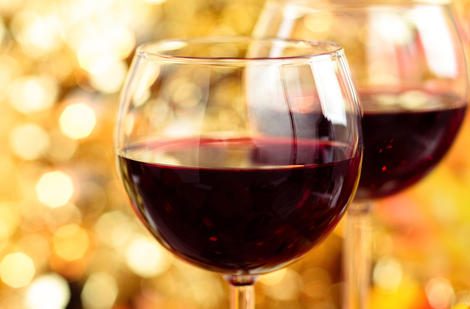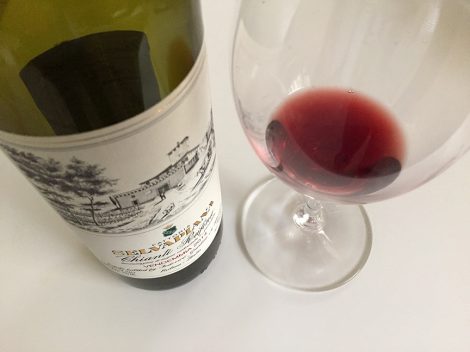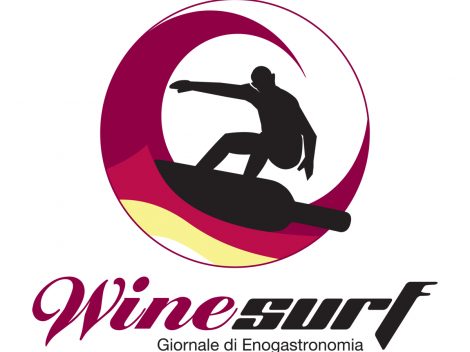chianti rufina
Recensione e punteggio per Vigneto Erchi 2016 di Kerin O’Keefe su Wine Enthusiast
Il nostro Selvapiana Chianti Rufina Vigneto Erchi 2016 ha ottenuto la seguente recensione e punteggio su WineEnthusiast: "Perfumed and all about finesse, this focused red (the result of a long-term project) is the latest addition to the firm's stellar lineup. It opens with enticing aromas of fragrant purple flower, wild berry, truffle, baking spice and a whiff of crushed herb. Smooth and radiant, it delivers crushed cherry, raspberry compote, mint and star anise flavors set against taut polished tannins. Bright acidity lends balance and tension. Drink 2021–2036. KERIN O’KEEFE RATING 95 DESIGNATION Vigneto Erchi VARIETY Sangiovese APPELLATION Chianti Rufina, Tuscany, Italy WINERY Selvapiana"
Vigneto Erchi 2017 premiato dall’Associazione Italiana Sommelier
Il nostro vino SELVAPIANA CHIANTI RUFINA VIGNETO ERCHI RISERVA 2017 ha ottenuto il massimo riconoscimento delle QUATTRO VITI nella settima edizione della Guida ai Vini d’Italia VITAE, edita dall’Associazione Italiana Sommelier. Ricordiamo che la consueta degustazione di tutti i vini premiati e la consegna degli attestati ai Produttori, prevista a Roma presso la Nuvola di Fuksas per sabato 28 novembre 2020, quest’anno purtroppo non sarà realizzata in presenza.
Vendemmia 2020
Anche quest'anno alla Fattoria di Selvapiana abbiamo concluso con soddisfazione la raccolta dei frutti delle nostre vigne. In questa galleria di foto vi raccontiamo una storia che si tramanda da generazioni e che si rinnova ogni anno
Nuove recensioni e aggiornamenti di Antonio Galloni su Vinous
Antonio Galloni ha recensito su Vinous i seguenti vini di Selvapiana: 2018 Chianti Rufina - 92 punti 2017 Chianti Rufina - 93 punti 2016 Chianti Rufina Vigneto Erchi – 95 punti 2016 Chianti Rufina Vigneto Bucerchiale – 94 punti 92 pts Selvapiana 2018 Chianti Rùfina Chianti Rùfina, Tuscany Red wine from Italy Drinking window: 2023 - 2038 Selvapiana's 2018 Chianti Rufina is exquisitely beautiful. A wine of translucence and character, the 2018 captures the essence of the vintage in spades. Dark cherry, blood orange, cinnamon, rose petal and mint are all laced together in the glass. The 2018 is effortless and silky, with striking aromatic presence and exceptional balance. This is so impressive. Antonio Galloni. Tasting date: September 2020 93 pts Selvapiana 2017 Chianti Rùfina Chianti Rùfina, Tuscany Red wine from Italy Drinking window: 2023 - 2037 The 2017 Chianti Rufina is fascinating to taste next to the 2018. It is richer and more intense, yet never strays too far from its Rufina roots. Sweet red cherry/raspberry fruit, chalk, mint and white flowers are some of the aromas and flavors that start to open with a bit of time in the glass. While the 2017 offers notable fruit density and volume, the tannins also have an element of firmness that is going to require cellaring or a good bit of aeration. It is another fabulous wine from Selvapiana. Antonio Galloni. Tasting date: September 2020 95 pts Selvapiana 2016 Chianti Rùfina Vigneto Erchi Chianti Rùfina, Tuscany Red wine from Italy Drinking window: 2023 - 2041 A new wine in the range, the 2016 Chianti Rufina Vigneto Erchi is off the charts. The purest essence of Sangiovese emerges from a wine that combines power with translucent finesse. Bright acids and citrus accents perk up the red Sangiovese fruit. Initially a bit austere, the 2016 gains volume with time in the glass. The Erchi emerges from a relatively new parcel for the state planted with cuttings from Bucerchiale. Compared to that wine, the Erchi has a much more red-fruited profile and also appears to handle aging in French oak better. The 2016 is a stellar debut. Don't miss it. Antonio Galloni. Tasting date: September 2020 94 pts Selvapiana 2016 Chianti Rùfina Vigneto Bucerchiale Chianti Rùfina, Tuscany Red wine from Italy Drinking window: 2026 - 2041 The 2016 Chianti Rufina Vigneto Bucerchiale is a dark, brooding wine. Swaths of tannin make a first impression. Gradually, black cherry, plum, lavender, cloves, leather and menthol start to emerge. This potent, massively tannic Chianti Rufina is going to need a number of years to come around. There is plenty of depth, but the elements are totally put together. The 2016 finishes with tremendous substance and gravitas. I expect the 2016 will always remain a brute. Antonio Galloni. Tasting date: September 2020
Fattoria di Selvapiana vince la BOTTIGLIA di Slow Wine 2021
"La guida Slow Wine 2021 vi ha assegnato i seguenti riconoscimenti: BOTTIGLIA (simbolo assegnato alle cantine che hanno espresso un’ottima qualità per tutte le bottiglie presentate alle nostre degustazioni) TOP WINE – VINO SLOW: Chianti Rufina Vigneto Erchi 2017 (Top Wine che, oltre ad avere una qualità organolettica eccellente, riesce a condensare nel bicchiere caratteri legati a territorio, storia e ambiente. L’attribuzione di questo simbolo implica l’assenza di diserbo chimico nei vigneti. Il Vino Slow risponde anche al criterio del buon rapporto tra la qualità e il prezzo, tenuto conto di quando e dove è stato prodotto) Non vi nascondiamo che quest’anno sia stato molto complicato realizzare la guida, ma riteniamo che il lavoro che abbiamo svolto sia stato puntuale, attento e decisamente innovativo. Slow Wine 2021 sarà la prima guida sia cartacea sia digitale: i contenuti, infatti, della guida si sono arricchiti di oltre 900 video interviste, accessibili da un QR Code pubblicato al fondo della scheda. Un atto rivoluzionario per una guida cartacea che il pubblico di appassionati e professionisti del settore saprà apprezzare."
Il Chianti Rufina di Selvapiana ottiene la CORONA dalla guida Vinibuoni d’Italia nelle Finali Nazionali
Il Chianti Rufina Docg 2018 della Fattoria di Selvapiana ha ottenuto l'ambito premio CORONA dalla Guida Vinibuoni d'Italia durante le selezioni nelle Finali Nazionali. "GUIDA VINIBUONI D'ITALIA EDIZIONE 2021 Touring Club Italiano A cura di Mario Busso e Alessandro Scorsone Spett.le FATTORIA SELVAPIANA Mi complimento con Voi perché il Vostro vino: Chianti Rufina Docg 2018 a seguito delle degustazioni e delle selezioni operate dalle commissioni della Guida Vinibuoni d'Italia nelle Finali Nazionali ha ottenuto la CORONA ovvero il massimo riconoscimento che la Guida attribuisce ai vini d'eccellenza. L'ambito premio è riportato nella guida Vinibuoni d'Italia 2021 con un'apposita icona. In occasione della presentazione dell'edizione 2021 della guida, che si svolgerà ad inizio 2021 a Roma, Vi verrà consegnato il diploma che attesta il premio ottenuto. Seguirà più avanti la comunicazione con i dettagli relativi al programma della premiazione. Nel rinnovarVi le congratulazioni, Vi segnalo di seguito quattro importanti iniziative con le quali intendo presentare e promuovere il Vostro vino premiato ad un vasto pubblico di estimatori, giornalisti e operatori di settore. Complimenti vivissimi per il premio ottenuto e un caro saluto. Mario Busso Curatore Nazionale Vinibuoni d’Italia"
Bucerchiale dal 1958 al 2013, la verticale di Sabrina Somigli su Intravino.com
"Bucerchiale Fattoria di Selvapiana, la verticale dal 1958 al 2013 Occasione ghiotta per parlare della Rufina, la mia terra. Di proposito non parlo di Chianti Rufina, ma semplicemente di Rufina, perché questo piccolo territorio, la meno vasta delle sottozone chiantigiane, che ha meno di 1000ha vitati iscritti all’albo, ha poco a che vedere col resto della denominazione. Questo non per celebrare la superiorità di un territorio rispetto ad altri, o giocare a chi ce l ha più lungo tra i Chianti, semmai a chi ce l’ha più alto, visto che la Rufina è comunemente indicata come il più alto tra i Chianti. Lo è per altitudine con vigneti, che nella zona di Dicomano e Diacceto non faticano ad arrivare ai 400 metri slm. Ma lo è anche per latitudine; la zona di Rufina è l’estrema punta settentrionale della grande denominazione Chianti, incastonata nell’Appennino, ai piedi del Monte Falterona, dove ha inizio il corso dell’Arno. Facile intuire come la sommatoria di questi due fattori possa essere riconducibile a una estrema diversità di questo territorio rispetto alle altre sottozone chiantigiane. Terra ancora piuttosto selvaggia, boscosa, terra di fronte in tempo di guerra, ancora poco battuta dai flussi turistici, benché a due passi da Firenze. La Rufina è particolarmente legata al sangiovese, che da queste parti si caratterizza per l’innata freschezza e per quel tannino Rufinese spesso riconoscibile. Vini dal carattere riservato, meno immediati e beverini di altri Chianti, con una capacità di invecchiamento importante. Eleganti e misurati, si esprimono al meglio nel tempo, con qualche anno sulle spalle. Il territorio di Rufina si snoda principalmente lungo il fiume Sieve, dove si possono identificare due aree: l’alta valle della Sieve, più stretta e ripida tra Dicomano e Colognole, e una parte centrale, da Rufina a Pontassieve, dove la valle si allarga, e la Sieve si congiunge all’Arno. Altre due aree completano il territorio: la conca che guarda a ovest che sale da Molino del Piano verso Doccia per poi riscendere a Sieci e la Valle di Pelago che si snoda lungo la statale del Passo della Consuma, e che rappresenta la porzione più a sud della denominazione che include anche la DOC Pomino, particolarmente vocata per pinot nero e chardonnay. Ed è nella porzione centrale, nel cuore della denominazione che si trova la Fattoria di Selvapiana, versante sinistro della Sieve. La Fattoria Selvapiana è per Rufina un riferimento qualitativo e storico, grazie anche alla Riserva Vigneto Bucerchiale, uno dei primi esempi toscani di vino aziendale di punta ottenuto da singolo vigneto. La proprietà è gestita dai fratelli Silvia e Federico Masseti Giuntini, conta circa 56 ha vitati e vanta uno storico di annate tra Riserva e Vigneto Bucerchiale (dal 1982 la Riserva diventa Riserva Vigneto Bucerchiale) che arriva al 1948. La verticale dal Chianti Rufina Riserva 1958 alla Riserva Vigneto Bucerchiale 2013 Poter assaggiare più annate di uno stesso vino va ben oltre la mera valutazione delle capacità evolutive dello stesso o delle migliori annate; è una lettura storica di un territorio, i cui cambiamenti sociali importanti si sono riflettuti sulla gestione agricola e di conseguenza sul vino stesso. Negli anni 50 e 60 la fattoria di Selvapiana era ancora gestita col sistema della mezzadria, i poderi erano coltivati a promiscuo e le viti erano molto vecchie. La maturazione del vino avveniva in botti di castagno e la malolattica era attivata con il sistema del governo all’uso toscano. Il chianti era ancora realizzato con la formula tradizionale che ammetteva anche le uve bianche. Chianti Rufina Riserva 1958: da una terra ancora segnata dal passaggio del fronte di guerra, un vino che regala tuttora il frutto integro. Io nemmeno ero nata e lui trattiene la ciliegia. Ancora cenni di sangue, china, erbe macerate. Il terziario non è compresso, si snoda pulito al naso. In bocca una punta di tannino viva e vegeta a 62 anni. Da una vigna promiscua con abbondante canaiolo, sangiovese, colorino, trebbiano e malvasia. Nel bicchiere poi cede a col tempo, ma solo dopo aver fatto la sua gran figura. Senza se e senza ma. Chianti Rufina Riserva 1965: la balsamicità, che si legge in resina e sentori di cipresso; poi cuoio e caffè d’orzo. Al colore si presenta più scarico del precedente, in bocca ha equilibrio e l’aspetto tannico avvertibile ancora nell’annata 58 qui è completamente fuso in un sorso morbido e levigato. Chianti Rufina Riserva 1973: il vino della seconda giovinezza. Escluso per molti anni dagli assaggi è stato riscoperto negli ultimi 5 anni. Come se avesse subito una sorta di risveglio dal coma di quella grandinata del settembre del 73 che compromise gran parte della produzione. È il campione col naso più altalenante, tra tabacco, canfora, cenni di rabarbaro, il terroso che arriva a tratti e anche liquirizia. Ma in bocca ha presa alcolica e persistenza grazie a una spiccata sapidità. Dal 1974, a seguito del decreto che impone la fine del contratto mezzadrile, le cose cambiano in agricoltura e la fattoria in generale inizia ad essere intesa come un’azienda con la conseguente introduzione di nuovi sistemi colturali e il vigneto da promiscuo diventa specializzato. A Selvapiana il processo di conversione dei vigneti si completa nel 1978; le densità di impianto di allora (3500 piante/ha) erano comunque basse per i criteri attuali. Chianti Rufina Riserva 1978: è il primo anno in cui la riserva viene prodotta con sole uve sangiovese e Selvapiana inizia la collaborazione con Franco Bernabei, tuttora in essere. È il vino del cambio di marcia, che ha polpa e lo si vede al colore più scuro e ricco, e al naso più esuberante di frutto nero , prugna, evidenze ematiche e canfora. Dal castagno si passa alla vinificazione in botti di rovere. Chianti Rufina Riserva 1980: l’intatto. Vino che non svolse la malolattica, conserva un naso veramente fresco, intatto nel piccolo frutto nero e in tenui cenni floreali (??). Bocca che chiude asciutta e decisa nella capacità di trattenere un tannino perfettamente integrato e saporito. Chianti Rufina Riserva Vigneto Bucerchiale 1982: è il primo anno in cui compare il nome Bucerchiale in etichetta. L’82 è considerata la grande annata, per andamento climatico e maturazione delle uve, ma a dispetto di ciò è il vino che si presenta meno in forma di tutti, attraversato, al momento, da una leggera nota evolutiva. Prevalgono sentori di cuoio e pelliccia, liquirizia e tabacco secco. Chiusura di bocca leggermente amara. Chianti Rufina Riserva Vigneto Bucerchiale 1985: considerata una “vendemmia unica”, dopo la gelata dell’85 che causò una sorta di diradamento naturale delle uve, i pochi grappoli superstiti si rivelarono concentratissimi e raggiunsero una ottima maturazione grazie all’andamento climatico primavera-estate regolare. Ed è unico anche al sorso, ma prima di tutto alla vista: rubino intatto, nessun cenno granato. Al naso è macchia mediterranea e mentolato, ha un sorso denso e pieno, e rivela una struttura solida grazie anche alla presenza di un tannino vivo e scattante. Chianti Rufina Riserva Vigneto Bucerchiale 1990: cambia la vinificazione, il periodo di maturazione si allunga a 30 giorni ed il legno piccolo è già entrato in azienda. Carnaceo, molto compatto al colore e nello sviluppo: geranio, sambuco, terra e sottobosco. In bocca è sodo, polposo, qui il tannino che caratterizza il Bucerchiale di Selvapiana inizia a manifestarsi in modo evidente. Chiusura di bocca piacevole di spezia. Chianti Rufina Riserva Vigneto Bucerchiale 1993: il tipico. Da un annata “classica” per andamento climatico, con inverno mite, primavera fresca e estate con temperature inferiori alla media degli ultimi anni, ecco il vino più rufinese di tutti. Macchia mediterranea, susina, ribes rosso, cenni di maggiorana e pepe bianco. La bocca è ricca con una freschezza penetrante che equilibra la concentrazione. Tannino vivo senza eccedere. Bella persistenza su toni freschi di ginepro e alloro. Chianti Rufina Riserva 1997: “il falso mito”, da queste parti la 97 non è stata l’annata del secolo. Una gelata in aprile compromise gran parte della produzione e infatti Selvapiana non esce con Bucerchiale, ma con la menzione riserva, con le uve provenienti da più vigneti. Il naso ha leggeri sentori evolutivi di rabarbaro, frutto in confettura e cenni di pomodoro. La bocca a dispetto del naso è rilassata ed equilibrata, con un finale di buona lunghezza, che riporta a confettura di mirtilli e alla ghiaia. Chianti Rufina Riserva Vigneto Bucerchiale 1999: eterna giovinezza. Vino che a 21 anni è ancora timido e si rivela piano piano regalando grande soddisfazione al palato. Frutto integro e nitido tra ciliegia e ribes, balsamico e sanguigno anche questo 99 rivela un carattere molto territoriale rufinese e un po’ restio a mostrarsi subito in tutta la sua ricchezza e eleganza. Chianti Rufina Riserva Vigneto Bucerchiale 2013: riparliamone tra una decina di anni. Per i vini della Rufina 7 anni sono l’infanzia con tutta l’energia esuberante della giovinezza, tra freschezza pronunciata e tannini che scalpitano. Il sangiovese giovane che sfodera anche i sentori di acciughina, la ciliegia fresca, tratti vegetali che lo rendono appena acerbo. Diamogli il tempo che si merita. Rufina è una parola sdrucciola, ma ahimé molti sdrucciolano proprio sull’accento. Perfino l’altoparlante della stazione di Pontassieve che annuncia le fermate del treno locale, ne sbaglia la pronuncia ponendo l’accento sulla i. Ogni mattina una fitta in pancia per noi poveri pendolari. Segnamocelo, si dice Rùfina con l’accento sulla U." http://www.intravino.com/primo-piano/bucerchiale-fattoria-di-selvapiana-la-verticale-dal-1958-al-2013/
Recensioni di Master of Wine Mary Ewing-Mulligan per Wine Review Online
Tre vini di Selvapiana sono stati recensiti da Master of Wine Mary Ewing-Mulligan per Wine Review Online. “Three Chiantis from an Outlying District By Mary Ewing-Mulligan Jul 20, 2020 Fattoria Selvapiana, Chianti Rufina 2018, Vigneto Bucerchiale 2016 and Vigneto Erchi 2016 (Dalla Terra Winery Direct, $19, $35 and $50): These days, Chianti is my favorite wine that I hardly ever drink. As much as I am a big fan of Chianti and Chianti Classico, I’m not dining out these days and therefore not ordering it in restaurants, where it is often the ideal choice. That and the urge to explore new and different wines have left Chianti out of my repertoire of late. Consider this column the beginning of my reparation. The overwhelming majority of my favorite Chianti wines are actually Chianti Classico, a separate wine once encompassed within the broader name of “Chianti.” Within the Chianti category per se, Fattoria Selvapiana is the star. It hails from the smallest of the Chianti subzones, Rufina, in the northeastern part of the territory. Here the soils are similar to those of Chianti Classico, but a more northern location and elevations that can range from 200 to 700 meters (655 to 2300 feet) give the wines delicacy and tautness that is particular to the region — particular to Selvapiana, in any case, which is the zone’s finest producer. Among Selvapiana’s four current releases, its basic Chianti Rufina 2018 is the least expensive ($19), the easiest to enjoy, and the readiest to drink. Despite these connotations of “lesser than,” it’s the wine I really want to drink, especially now, in July. Its nose is surprising fruity and vibrant for a Chianti; it suggests fresh red cherries, dried herbs, fresh mint and thyme, and licorice. In your mouth, the wine is dry and medium-bodied, a light-ish red with a spine of acidity and just a medium amount of tannin, with fruity flavors similar to its aromas. A noteworthy aspect of this wine is how well it “hangs” in your mouth — fruitiness in the front, acidity up the middle and a combination of fruitiness and textured tannin in the back. It’s a complete wine that delivers all across your mouth. Did I mention the price, $19? The 2018 Chianti Rufina is 95% Sangiovese with some Canaiolo, Colorino and Malvasia Nera. It is aged in large French-oak barrels, and only briefly. The newest wine in the Selvapiana lineup is 2016 Vigneto Erchi Chianti Rufina ($50). It’s the opposite of Selvapiana’s basic Chianti Rufina in the sense that it’s the richest Chianti, the most ageworthy and the most expensive. When Selvapiana’s owners, the Giuntini family, purchased this land in 1999, it was the first purchase they had made since 1897! The 2016 is the first release from this vineyard. On the nose, this wine is complex but tight, showing savory mineral notes that combine with concentrated red cherry, spicy oak and woodsy herbal hints. After that tight nose, the wine seems surprisingly rich in flavor when it enters your mouth, all dark berry fruit but in a truly dry wine, not at all the sort of rich, fruity flavor many wine drinkers might be accustomed to. The wine has high acidity and an abundant amount of velvety tannin, but not enough tannin to overwhelm that fruit. Again, there’s balance happening here between the aromatics and the structure. The wine maintains the signature structure of a Chianti and yet delivers fruitiness worthy of not only the fine 2016 vintage, but also an apparently fine vineyard and an enlightened winemaking regime. This wine is 100% Sangiovese, from vines that were a massale selection from the Bucerchiale vineyard. It aged 18 months in French oak barriques. Between these two wines is the 2016 Selvapiana Vigneto Bucerchiale Chianti Rufina Riserva ($35). This is the winery’s flagship, a single-vineyard, all-Sangiovese wine has a track record of aging beautifully. Stylistically it is closer to the Chianti Rufina than the Vigneto Erchi because it is light on its feet and has an uplifted, fresh energy, but is considerably more concentrated. Its aroma gives me red cherry, a bit of raspberry, a whiff of chocolate and spicy, smoky oak. Although weightier than the basic Rufina, this wine is still medium-bodied, with high acidity (of course) and silky flesh, at least until the wine’s raspy tannins register on your tongue. Even then, a silkiness lingers and carries through to the finish. When the wine has some aeration, the tannin doesn’t really need a few years to integrate, but in a few years this wine will be all the better, while remaining classically Chianti Rufina. Traditionally, Vigneto Bucerchiale is considered Selvapiana’s finest Chianti, but the emergence of Vigneto Erchi might be shuffling the cards. Bucerchiale is a wonderful, classically styled Chianti with a proven pedigree. But for me in this moment, choosing between the drama of Vigneto Erchi and the joyful appeal of the basic Chianti Rufina has me speaking about Bucerchiale as if it is an also-ran. Such is the sad fate of the middle child. 2018 Selvapiana Chianti Rufina, 90 Points 2016 Vigneto Bucerchiale, 92 Points 2016 Vigneto Erchi, 93 Points” http://www.winereviewonline.com/MEM_on_Selvapiana_Rufina.cfm
Le recensioni di luglio dei vini Selvapiana su Master of Wine Christy Canterbury
Time Flies: Celebrating New & Old Wines at Fattoria Selvapiana One hundred years passed between the Giuntini family's last two purchases of land for vineyards, 1897 and 1997. So, the 19-year wait to produce the first single vineyard wine, Vigneto Erchi, from that new plot was relatively quick. (The family planted the vineyard in 1999.) In the same year that Fattoria Selvapiana welcomed this new wine to its stable, the winery also celebrated the 300th harvest since Pomino's first quality decree, or bando, by Grand Duke Cosimo III de’ Medici in 1716. The duke defined this area to protect the quality of wines being shipped to England (in place of French claret during the various wars of those days) for increasingly higher prices and volumes. Time flies, and life is too short to drink bad wine. With any of the Selvapiana wines, you won't waste a sip! 92 Fattoria Selvapiana 2016 Vigneto Erchi Chianti Rùfina DOCG 14% $50 The south-facing Erchi vineyard is planted with massal selection Sangiovese from the Bucerchiale vineyard. There is a fascinating, stern elegance in the Vigneto Erchi. The nose is tight and reserved. (Give it a hearty decanting.) The palate is similar though there is a pop of sweet cherry fleshiness in the mid-palate. The tannins are broad and grainy, and while their initial attack feels as though they may be relentlessly drying, the mid-palate plumpness diffuses them nicely. The concentrated, beautifully ripe fruit pivots into a lingering finish of dried mulch and exotic spice with a lightly leathery finish. Compelling now, this needs and deserves time. It has the structure and stuffing to age very well. Drink: 2023-30 94 Fattoria Selvapiana 2016 Vigneto Bucerchiale Chianti Rùfina DOCG Riserva 14.5% $35 This pure Sangiovese Riserva from Selvapiana's best vineyard is made only in the best vintages. (See the 2014 and 2015.) It always impresses me that a wine with such pedigree can be so accessible at such an early age. This 2016 is raring to go with its enthralling aromas of roasted meat, briar fruits and mulch. The attack is smooth - almost lush for the Rùfina area - with ripe fruits. To back up this generously-bodied palate is Rùfina's telltale chirpy acidity that creates a waterfall of refreshment on the back palate. Throughout, the lightly coarse and sticky tannins mold onto the palate to create a mouth-filling and dignified Sangiovese. The fruit is impressively powerful and forward - not surprising given the vintage, but the structure is unrelentingly harmonious. Drink: 2020-31 91 Fattoria Selvapiana 2015 Pomino Rosso DOC Villa Di Petrognano 14% $21 While Pomino is a very small denominazione today, so small that only two producers use the DOC, it once defined a much larger area, including Chianti Rùfina, Chianti Classico, Carmignano and Val d’Arno di Sopra. This wine's dominant variety, Sangiovese (60%), is mostly noticeable in the orange-tinged, ruby color and the floral, strawberry-perfumed attack. Then this Pomino Rosso's Bordeaux contributors - equal parts Merlot and Cabernet Sauvignon - take over the palate flavors and feel. The mid-palate is full-bodied and supple thanks to the Merlot and the ripe nature of the 2015 vintage. The somewhat husky tannins hail from the Cabernet Sauvignon. The pleasantly earthy and minerally finish lingers with liveliness. There is good balance and integration here, and with the full-blast personality of the Bordeaux varieties, the wine could certainly stand to relax a bit in bottle. Still, it's ready to be enjoyed if you like your wines young and vigorous. If you're interested in putting away a few bottles to see how wines age, this should do nicely for the first half of this decade and even beyond, for a very modest sum! Drink: 2020-26 90 Fattoria Selvapiana 2018 Chianti Rùfina DOCG 13.5% $19 Chianti's Rùfina sub-zone of is arguably the best of those outside the Classico area, and this label consistently shows why. Yet again, this is terrific value for the money, showing off Rùfina's pretty and poised aromatics with Sangiovese's tantalizing red fruit tones and light earthiness. This vintage's aromas showcase rose petals, cigar wrapper and red currants. The medium-bodied palate is elegantly balanced between its pristine, energetic fruit, its lightly mouthcoating texture and elegant, talc-like tannins. There is zero evidence of oak use thanks to the employment of large, 25-30 hl French casks. This is the epitome of elegant, high altitude Chianti Rùfina. This vintage's finish is lighter than the 2015 and 2016, suggesting that this is more of an early- to-mid-range wine. Drink: 2020-24 http://christycanterbury.com/publishedhere/2020/7/10/time-flies-celebrating-new-amp-old-wines-at-fattoria-selvapiana
Articolo e recensioni di Carlo Macchi sul Chianti Rufina
Carlo Macchi ha scritto un bellissimo articolo sul Chianti Rufina a seguito della degustazione e della diretta Zoom e ha anche pubblicato le valutazioni dei vini su Winesurf.it Di seguito il link dell'articolo: https://www.winesurf.it/chianti-rufina-ad-armi-pari-con-i-migliori-sangiovese/ e quello delle valutazioni: https://www.winesurf.it/it/guidavini/degustazioni/1125/chianti-rufina-2020-01-06-2020/ Carlo Macchi, inventore e curatore della guida Vini buoni d'Italia fino al 2005, è oggi direttore di winesurf.it, portale online dedicato al mondo del vino e dell'enogastronomia più in generale.

